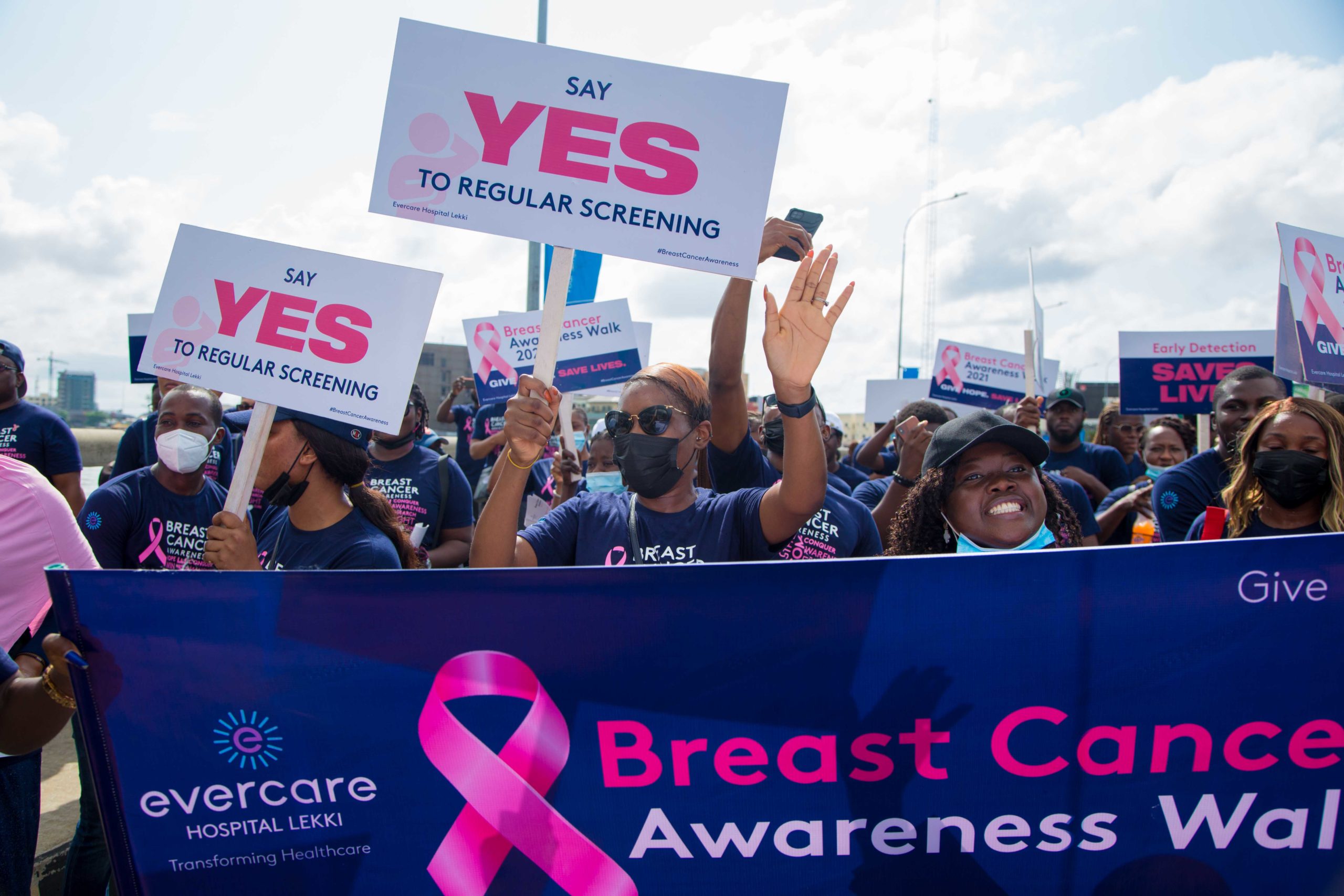As Breast Cancer Awareness Month winds to an end, it’s time to ask hard questions about one of the most drastic and frequently used interventions in Nigeria’s breast cancer therapy.
Mastectomy is a surgical procedure that removes one or both breasts, either partially or completely, to treat or prevent breast cancer.
The extent of removal depends on the type and stage of the disease. Common types include total (simple) mastectomy, which removes the entire breast; modified radical mastectomy, which removes the breast and nearby lymph nodes; and the now rare radical mastectomy, which also removes chest wall muscles.
Why mastectomy is so common in Nigeria
Breast cancer accounts for 22.7% of all female cancers and causes 15.4% of cancer-related deaths among Nigerian women. Studies show that over 70% of patients present with late-stage breast cancer (Stage III or IV), when the disease is already advanced and the tumour has grown large or spread.
At this point, conservative surgeries such as lumpectomy—a breast-conserving surgery that removes only the cancerous lump and a small margin of surrounding tissue, preserving most of the breast—are rarely possible, and the mastectomy becomes almost inevitable.
“Late presentation is driven by low awareness, fear, symptom misinterpretation, reliance on traditional healers, and financial or geographic barriers to care,” says Joy Aifuobhokhan, a health data scientist and the COO at AwaDoc, a digital health solution.
These systemic failures funnel thousands of women each year toward one of medicine’s most life-altering operations.
Limited options
Even when women are diagnosed early, the shortage of functional radiotherapy machines makes breast-conserving surgery nearly impossible. Radiotherapy is essential after breast-conserving surgery to destroy residual cancer cells, yet only nine public hospitals and five private hospitals in Nigeria have operational radiotherapy units.
Of these, just six of them are licensed by the Nigerian Nuclear Regulatory Authority—and neither of the two modern nuclear centres is currently functional.
Where machines do exist, they are often overstretched or broken down, creating long waiting lists. With such uncertainty, doctors often recommend mastectomy as the most “definitive” treatment they can guarantee.
When a mastectomy becomes necessary
While mastectomy is often seen as the ultimate cure, it is not always necessary. “Mastectomy is necessary when the tumour is very large relative to breast size, multicentric, when negative margins cannot be achieved with acceptable cosmesis, or when postoperative radiotherapy is unavailable or contraindicated,” Aifuobhokhan explains.
In contrast, breast-conserving therapy (BCT) is a safe and effective alternative for women diagnosed in the early stages of breast cancer (Stage I and II). In research conducted by the National Institute of Health, there is a higher 10-year survival for women who undergo BCT over mastectomy in the early stages.
Yet a review from a suburban Nigerian tertiary hospital found that only 9.5% of patients undergo breast-conserving surgery, while 90.5% receive mastectomies—a reflection of systemic constraint.
What cancer treatment should mean
Cancer treatment is a multimodal journey that involves chemotherapy, radiotherapy, hormonal therapy, targeted therapy and long-term follow-up.
But in Nigeria, access and affordability are the biggest obstacles. Most patients pay out of pocket. Chemotherapy alone costs ₦600, 000 – 1.5 million per cycle. Targeted therapy for HER2-positive breast cancer, such as trastuzumab, remains out of reach for most families.
Radiotherapy, when available, can cost an additional ₦1.5 million to ₦2 million for a complete course
Consequently, mastectomy often becomes the only part of the “full treatment” that patients can afford, even though surgery alone cannot cure advanced disease. Without timely chemotherapy, radiotherapy, and hormone therapy, the likelihood of recurrence or metastasis remains high.
Why survival remains so ow
It is one of the paradoxes of breast cancer care in Nigeria: women undergo mastectomy at great physical and emotional cost, yet survival rates remain low.
Aifuobhokhan attributes this to the stage at diagnosis and incomplete care. “Survival after mastectomy is strongly influenced by stage at diagnosis and completeness of subsequent care. If patients present with advanced disease, surgery alone is often insufficient; they also need timely chemotherapy, radiotherapy, targeted therapy, and good supportive care.”
Data confirms this. The five-year survival rate for Nigerian breast cancer patients is about 37.6%, compared with about 90% in the United States. One study reported only 58.7% five-year survival among women who underwent mastectomy.
These numbers reveal that mastectomy alone cannot save lives without the backbone of a well-funded, fully equipped, and accessible oncology care system.
Early detection
If mastectomy reflects the failures of late diagnosis, then early detection is the antidote.
“Early detection makes a very large difference,” remarks Aifuobhokhan. “When cancers are diagnosed at earlier stages, they are smaller and often amenable to breast-conserving surgery and outcomes (survival, quality of life) are markedly better.”
Yet, early detection remains elusive for most Nigerian women. About 80% women discover their cancer at an advanced stage, often misinterpreting early signs like a painless lump or nipple discharge. Many delay medical care or turn to traditional healers.
Public awareness campaigns like Breast Cancer Awareness Month each October have helped, but they remain limited. To make a real difference, breast-health education must move beyond annual campaigns into year-round, community-based outreach in markets, churches, mosques, and workplaces.
The Promise of Precision and Genetic Medicine
Modern oncology recognises that no two cancers are the same. The era of one-size-fits-all treatment is giving way to genetic testing and precision medicine, which helps doctors tailor care to individual patients.
“Genetic testing and precision oncology can help personalise care,” notes Aifuobhokhan.”Identifying BRCA1/2 or other high-risk mutations informs risk-reducing strategies … knowing tumour subtype guides systemic therapy that may shrink tumours and enable breast conservation.”
Pilot genetic-testing programmes in Lagos and Abuja have shown promise, but expanding them requires investment in training, counselling and policy frameworks to ensure ethical use.
The story of Angelina Jolie, who underwent a preventive double mastectomy after learning she carried a BRCA1 mutation, sparked global debate about risk-reducing surgery.
“Prophylactic bilateral mastectomy is not a routine recommendation for everyone with a family history,” Aifuobhokhan cautions. “It is an option for people at very high genetic risk … after thorough genetic counselling and informed consent.”
In Nigeria, where genetic testing is limited and family histories are often incomplete, prophylactic mastectomy cannot be a blanket recommendation.
Barriers to breast-conserving care
For Nigeria’s women, the barriers to less-invasive treatment options are both structural and social.
Beyond the shortage of radiotherapy centres and high costs, there is also a deep psychological element.
Some women believe mastectomy guarantees survival, while others fear that conserving the breast means incomplete removal of the disease.
Cultural stigma around breast loss, femininity, and marital acceptance adds another layer of complexity.
Rethinking the system
If Nigeria is to improve survival and offer women real choices, several urgent reforms are needed.
Investment in radiotherapy and oncology infrastructure is non-negotiable. Every geopolitical zone should have at least one functional radiotherapy centre. Regular maintenance, staff training, and supply of drugs and consumables must be ensured.
Similarly, universal health insurance should cover cancer treatment comprehensively. The financial burden of care is devastating; reducing out-of-pocket payments will increase adherence to full treatment regimens.
Diagnostic capacity, including immunohistochemistry, hormonal and HER2 testing, and genetic profiling, should be standardised and subsidised. This will enable tailored therapies that may reduce unnecessary mastectomies.
Additionally, patient education and psychosocial support must be strengthened. Women should be fully informed about their treatment options, side effects, and survival outlooks. Psychological counselling before and after mastectomy is vital for emotional healing.
Research and data collection should be prioritised. Reliable national cancer registries will allow policymakers to track outcomes, allocate resources effectively, and design evidence-based interventions.
Is mastectomy worth it?
The answer depends on context. In Nigeria today, mastectomy remains the safest option for many women, not necessarily because it is the best, but because it is the most feasible within a failing system.
In a better-resourced health system, with early detection, accessible radiotherapy and comprehensive post-operative care, mastectomy would be one of several choices, not the default.
Beyond the pink ribbons and parades, Nigeria must confront a vital question: how do we ensure that mastectomy becomes a choice, not a compulsion born of broken systems?
Summary not available at this time.






